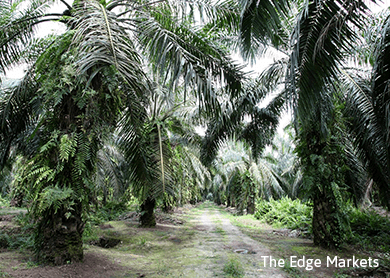
SINGAPORE/JAKARTA (Jan 12): Recent rains across Southeast Asia are expected to boost palm oil production this year as fears of an ongoing El Nino dry spell recede, threatening a reversal for one of the few commodities to record a price rise in 2015.
Palm oil prices jumped by a third in the last four months of the year as the El Nino weather pattern gripped Indonesia and Malaysia, which account for about 85 percent of global output.
Palm prices closed 2015 up nearly 10 percent, just beaten by cocoa among major commodities, as governments and private forecasters cut their production outlook for the oil, used mainly for cooking but also in products ranging from cosmetics to confectionary and biodiesel.
However, December rains have led producers to forecast higher output in the second half of 2016, even though the lingering impact of the dry weather will hit production over the next few months.
"We have seen a low impact of El Nino on crude palm oil production, people are looking at higher yields than what was expected earlier," said Marcello Cultrera at brokerage Oriental Pacific Futures in Kuala Lumpur.
"El Nino should be declining in coming months, its expectation on supply mainly drove down prices."
Benchmark palm oil prices have started to react, posting their biggest weekly loss since early October last week and are down 2 percent for the year.
Expectations of higher consumption of palm oil-based biodiesel are also coming under scrutiny after steep falls in oil prices.
"Palm oil should fall to 2,200 ringgit a tonne to compete with soyoil," Cultrera said, down 10 percent from current levels around 2,440 ringit.
INDONESIA LEADS GAINS
The biggest increase in production is expected to come from top producer Indonesia, where 2016 output is now forecast to rise by up to two million tonnes from a year ago to 33 million to 33.5 million tonnes.
"Considering that the El Nino has stopped, it could be higher," Fadhil Hasan, executive director at the Indonesian Palm Oil Association (GAPKI), told Reuters.
GAPKI sees Indonesia's 2016 output at 33.5 million tonnes, up from an estimated 32.5 million tonnes last year, while the Indonesian Palm Oil Board expects production at 33 million tonnes from 30.9 million tonnes in 2015.
Malaysia, which had been expected to record lower output in 2015, is now likely to see production almost flat at around 19.8 million tonnes, said M.R. Chandran, a veteran palm oil industry official who works as a consultant in Kuala Lumpur.
"After April, palm oil production will start improving," Chandran said. "We have had good rains all of December. We don't see El Nino weather anymore."
Smaller palm oil producers such as Thailand and countries in Africa could also see higher production, industry officials said.
A rise in palm oil output will also coincide with an expected fourth consecutive year of record global soybean production and slowing vegetable oil demand from top importers India and China.
Palm oil accounts for around 40 pct of global supplies for edible oil, competing with soyoil.
"There are huge stockpiles of vegetable oil stocks in China and India, we are expecting a tsunami of soybean from South America," said Cultrera of Oriental Pacific Futures.
Still, some planters said it is difficult to forecast output because of the dryness experienced by trees last year, while Malaysia is still forecasting warmder drier weather.
"It is tricky to predict production due to the dry spell and [forest fire] haze in Indonesia, which is generally expected to negatively affect production," said Roy Lim, Group Plantations Director of leading planter Kuala Lumpur Kepong Berhad.